The girl who broke all the barriers: Judit Polgar, the Queen of Chess
In the third episode of the series "Olympiad stories with Saravanan", IM Sagar Shah and IM Venkata Saravanan discuss Judit Polgar's flabbergasting 12.5/13 performance in the 1988 Thessolanki Olympiad. Judit was rated 2365 FIDE at the time, with rating lists coming out every six months. Not only did Hungary sweep the championship to take gold and defeat the all-powerful soviet chess team, but Judit made an incredible 2694 performance, and she was barely twelve years old. To better put this in perspective, you need to realize that in 1988, only two players in the world had even 2700 ratings: Kasparov and Karpov. Thumbnail: Abhyudaya Ram.
Judit Polgar's astounding performance in the Olympiads
Sagar Shah(SS): It's the third episode of the series, who are we going to talk about today?
Venkatachalam Saravanan(VS): When we talked about Vishy Anand in the last episode, we talked about passion and the need to have fun. When I think about who has the most fun over the chess board and has played sensational games in the Olympiad, I think Judit Polgar is where we should go to.

SS: The strongest female player ever in the world of chess! I think Olympiad is the part of her career that put her into world prominence, isn't that right?
VS: Definitely. The 1998 Thessaloniki Olympiad was where Team Hungary made a sensational debut, with the Polgar sisters (Susan, Sofia, and Judit) and Ildiko Madl. They just swept off the reigning champions, Team Georgia. The way Judit played in this tournament was phenomenal, she scored 12.5/13!

SS: There used to be 3 boards at that point, right?
VS: Correct. There used to be 3 boards + 1 reserve player for women, and 4 boards + 2 reserve players for men. These rules changed somewhere around the year 2000. Ildiko Madl was the fourth player on the team, but sadly she didn't get a chance to play in the majority of the event.
This is something I have always wondered about. Polgar became a tactical giant later in her career, the female equivalent of Alexei Shirov. Were there any flashes of that in this tournament? What's your memory about her games in the tournament?
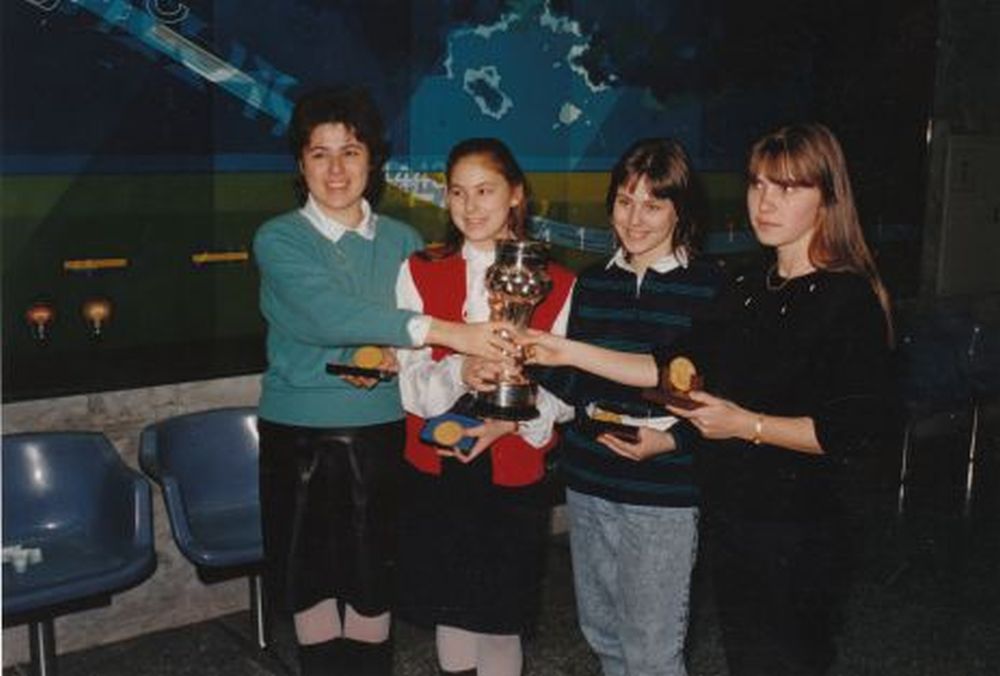
SS: There was this game between Judit and Pavlina, where she crushed her opponent in 17 moves! I really enjoyed that game.
VS: And she was only 12 years old at the time! You know, I met her at the world championship match in Dubai recently. I have always had this image of chess players, especially, you know, the world champions being serious at all times. But I saw her in the chess24 Livestream of the Candidates matches along with Magnus Carlsen, and they were having so much fun! Both Polgar and Carlsen were giggling and laughing, joking around.
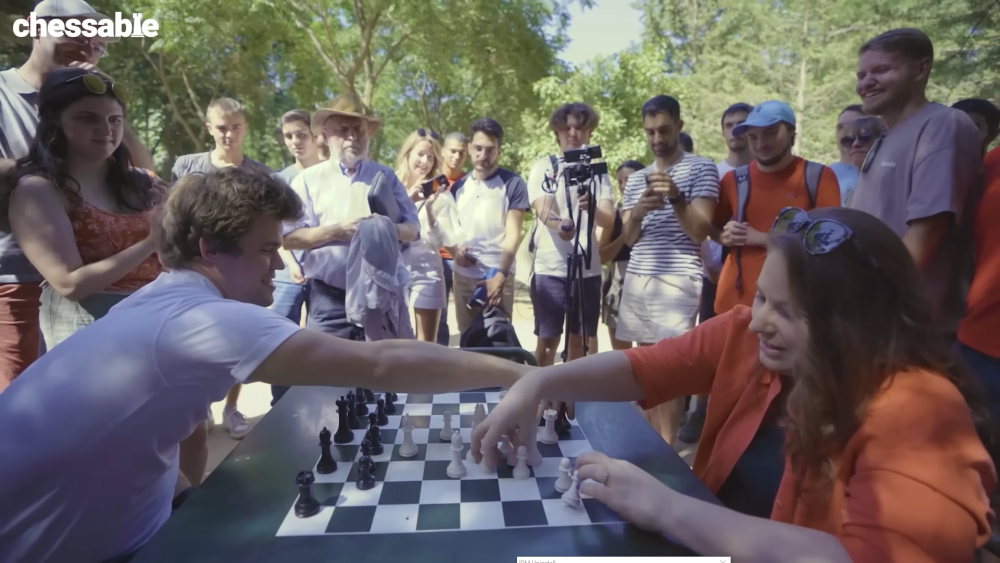
SS: Her passion is to use chess as a tool to empower kids. That's why she started the global chess festival, one of the finest events all around the globe! She also loves Indian cooking. All this just shows that whatever she likes to do, she goes deep into it.

VS: Yes, she told me that too. I feel like telling this joke now that just some fun came to my mind. Long ago when Kasparov was still playing, I asked Anand " whenever I see Kasparov (there was no YouTube but videos at the time), he comes across as extremely serious to me. Does he ever smile? Anand said, "No, no, he knows how to have Then he told me this very nice joke. There was this intel series of Grand Prix rapid tournaments during the end of the 90s, one of Kasparov's brainchild. So, in one of the matches, Garry and Vishy have finished their games and looking at other boards. A strong 2600 GM (let's not reveal his name) was playing against Judit Polgar. The pawn structure for white is g3 f4, and there's a black pawn on e6. Polgar had the black pieces, the other guy had the white pieces.
So first what the opponent does is play f5. She just looks at it and takes exf5, winning the pawn. The White knight now comes to f4, and the opponent now plays g4. Polgar is puzzled, and then she captures that pawn as well, now another knight comes from e2 to g3. But this didn't work out for him- since he was 2 pawns down, he promptly lost the game. Anand turns to Kasparov with a puzzled look on his face, asking "What just happened"? Kasparov goes:
Just before the tournament, this guy read something about blockades, but he didn't read it properly.
[breaks out in laughter] This is one of the best jokes I've ever heard in chess. And it's a true chess joke which you can only understand if you're a chess player. And, it comes from Garry Kasparov! That's why I am not at all surprised that Judit is so fun-loving.
Judit Polgar (Hungary) vs Pavlina Chilingirova (Bulgaria), 1988 Thessaloniki Olympiad
_M2R18_834x834.jpeg)
VS: Somewhere around here, Judit gets what she wants. She gets an open position, with free momentum of her pieces. Of course, she didn't care about material, ever, and there's a potential of a Kingside attack.
+1(3)_54H4A_1000x499.jpeg)
SS: After 13...Bxe5, Black has the idea to play ...Bxc3 followed by ...Qxb5, winning a piece. A normal player might have considered Bxc6, but Judit played 14. Rae1! This just shows the tactical patterns already in her mind.
VS: Throughout the game, Polgar never bothers about the pawn on e5. This is the sign of a person who loves their tactics. She knows that the time taken to grab the pawn will definitely prove costly, as it did in the game. For attacking players, there's a theory by GM RB Ramesh:
#1 If the position is equal, and there's a chance of an attack, the preference for material comes in the end.
#2 You are obliged to attack when you are supposed to attack. At that point, if any of the sides start paying attention to material, they will lose the game.

So if you're on the attacking side, and you suddenly get worried about the material you're giving, your attack will not succeed. If you're on the defending side, and suddenly you get tempted to grab material your opponent is giving, you will end up on the losing side. So ...Bxe5 is one of the moves where you know, black got tempted to take the pawn.
_WMEN9_834x834.jpeg)
SS: I think Judit's next move 16. Qh6! was very cool. Because the threat is clear- she wants to go Bf6 and mate on the dark squares. Pavlina replied with 16...Qf5 and she thought she stopped it. But now came a beautiful tactical shot 17.Qxf8+! and the Bulgarian had to resign because Bh6+ Kg8 Re8# is unstoppable.
VS: I'm very sure Judit smelled this miles before. And the most important thing is you know, you go through these three wonderful books written by Judit Polgar: how I beat Fisher's record, A game of Queens, and How I reached the top 10, these books are loaded with attacking patterns. She was 19 when she played this game, and she was rated 2365 back then. By today's standards, she would've been 2500 easily in my opinion, or even maybe more. I think this game was a snack before the ultimate show. This was played in the 10th round when I believe for all practical purposes, the Hungarian team had won the event.
SS: I think Judit's father Laszlo Polgar was one of her main trainers in the younger days. and there's this famous book written by him "5334 problems, combinations, and games" The book is full of various tactical patterns. I think this was the kind of training they did in the younger days, looking at a lot of patterns.
VS: Exactly. They say when a chess player is young and developing, the most important thing to know is the amount of knowledge you put into the book tactically, the tactical patterns, and attacks and all. It is a wonderful book for any beginner, I can wholeheartedly recommend it. The game with Pavlina was one-sided in a way. If I have to put a point saying "this was Judit's play", my personal favorite was her game against Xie Jun from China, who went on become the women's world champion.

SS: So before we go to that game, were you following Judit's play at the time? What happened when this team of Hungary just went forth and beat everyone, took the gold medal, Judit scored 12.5/13? I think Garry Kasparov was watching some of her games as well. I think all these stories came out when you were a growing chess player, what kind of an impact did that make?
VS: At that point, two sensational prodigies came out, Judit Polgar and Vassily Ivanchuk. 1989 was the year Ivanchuk won the Linares tournament ahead of Karpov. This was very, very refreshing at the time. First of all, any new talent coming up is exciting news. The most important part of the story was you know the difference in the style of Judit compared to her other sisters, Susan and Sophia. The kind of tactics that Polgar used to play was amazing! See, I have never been associated with women's chess, and only recently I've started working with a woman grandmaster. But from what I've heard from my friends Ramesh RB and Vishal Sareen, the way they played it from the beginning, it was not very common that you find tactical geniuses at the top of women's chess. Of course, we have all kinds of players, this has nothing to do with stereotyping them. But in 1988, there was no player like Judit before her, who used to play chess like her. That was one very important thing.

The second thing was, at that time, the stories of Laszlo Polgar's experiment with the family had not yet come out. They had three children, they raised them in a certain way, and they took them out of the common educational system of Hungary. All of them were taught in their own way, and they became geniuses- not only in chess but in everything. We know these stories only subsequently, now that we've read what Laszlo Polgar wrote. But at that time, a man went against the government of a country, that too an Eastern Bloc country, which added to the intrigue a lot.

SS: It is amazing how all three of them went on to become very strong players. But what Judit has achieved is tremendous- she is the only female player to date to cross 2700! She was beating all the top-level Grandmasters at the time, not in any blitz games, but properly crushing them! I remember she defeated Anand in a fantastic attacking game, sacrificing one piece after another.
VS: I had one false belief at those times I had this very strong belief that people who become world beaters or prodigies, all started as tactical players, and then they went on to become universal players. Or, they stayed as tactical players and still dominated the world. So I used to quote Judit, Kasparov, Shirov, Anand, etc. But I changed my views when I met Koneru Humpy on the board! I played her in the 1997 National Championship when she was hardly 11 years old. But Koneru Humpy was completely different! She was a very sound positional player who used to excel in endgames from her younger days.
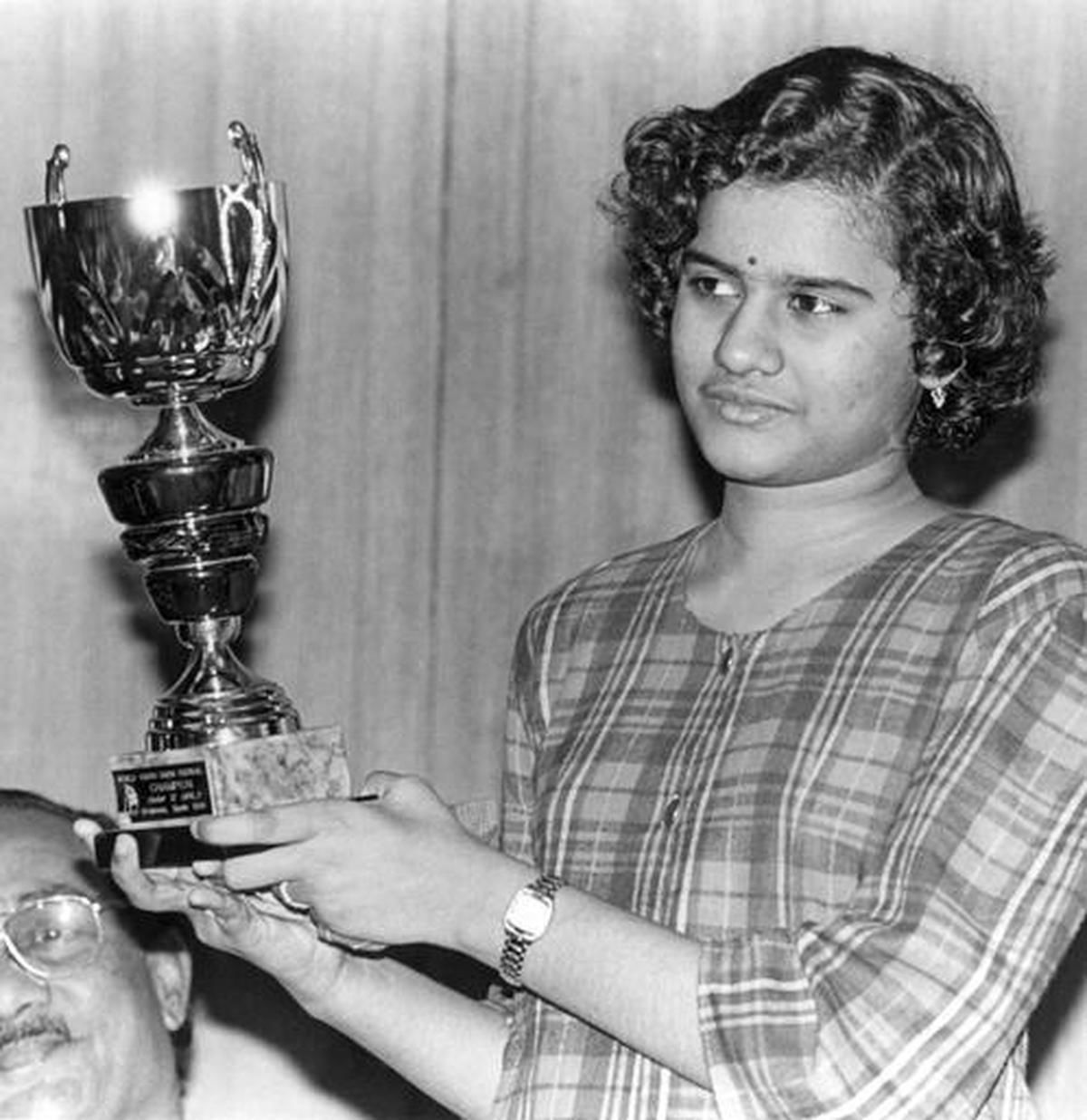
But at the time, Judit Polgar fit the bill very well. She was a tactical player, and there was no doubt that she will go to the heights she went to. So this Olympiad was in every way, a sensational start to her career.
SS: In a way, Judit Polgar is unique. She's unique in the chess world, but she's also unique in the whole wide earth because there is no sport in which women had come so far in defeating her male opponents. She's an unbelievably big superstar, and the seeds of it are sown in this Olympiad itself.
VS: She's also on her way to becoming one of the best commentators in chess! Very jolly and interesting commentary, I had a lot of fun listening to her in the Candidate's tournament coverage.

Xie Jun (China) vs Judit Polgar (Hungary), 1988 Thessaloniki Olympiad

VS: There is an Indian Grandmaster who made his life by playing h5 with the Black pieces in the Sicilian Taimanov. It is none other than India's 2nd GM, Dibyendu Barua! I would like to share a story that Anand told me.
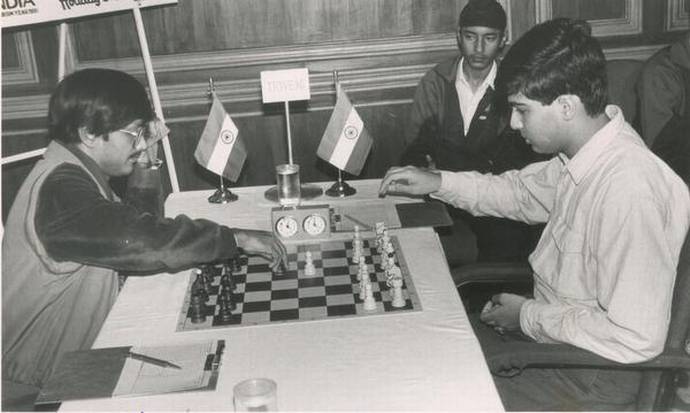
Anand and Barua, after they become very prominent players, played national juniors in 1986. That was one tournament where Baruah defeated Anand, and Vishy finished second. So after the tournament, Anand comes back to Chennai and we meet him and ask "Anand, how did it go"? Anand goes:
Every day, I will be playing Ruy Lopez's and I will have an equals plus position in move 30, and I'll be pushing for a win. Then I'll take a look at the top board, where Barua will just play ...Nd4 Bc5 h4 Ng5, and the opponents would get mated.
[laughing] This is basically one of those fun lines of the 80s and 90s, which we used to enjoy playing a lot. This is another tragedy of the engine- the machines made sure that such systems will never succeed for Black [smiles].
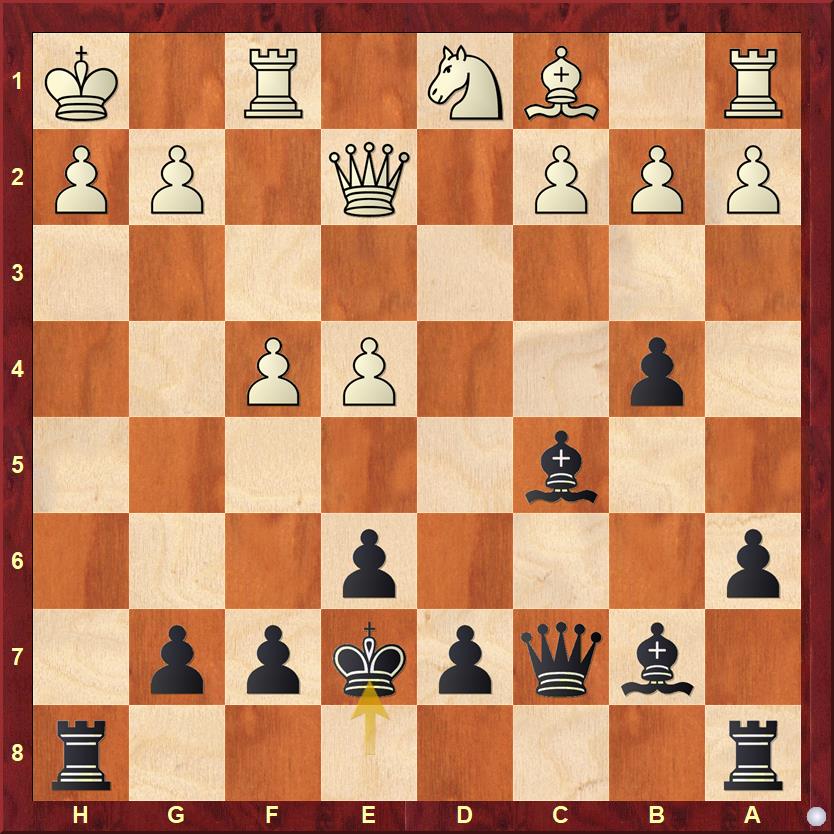
VS: When Xie Jun played 16.Nd1, in her wildest dreams, she did not expect the move ...Ke7. When I saw this game for the first time, this move struck me the most. This is a person who wants to attack at all costs, King in the center is good! An important point to notice is, why didn't she go for 16...0-0-0. The reason is that she doesn't want to give any counterplay to White by playing a3 and starting a queenside attack. Ke7 is probably a little too adventurous, g5 followed by Rh4 was the best idea. But when an attacking player sees a move like Ke7, they simply cannot resist it.
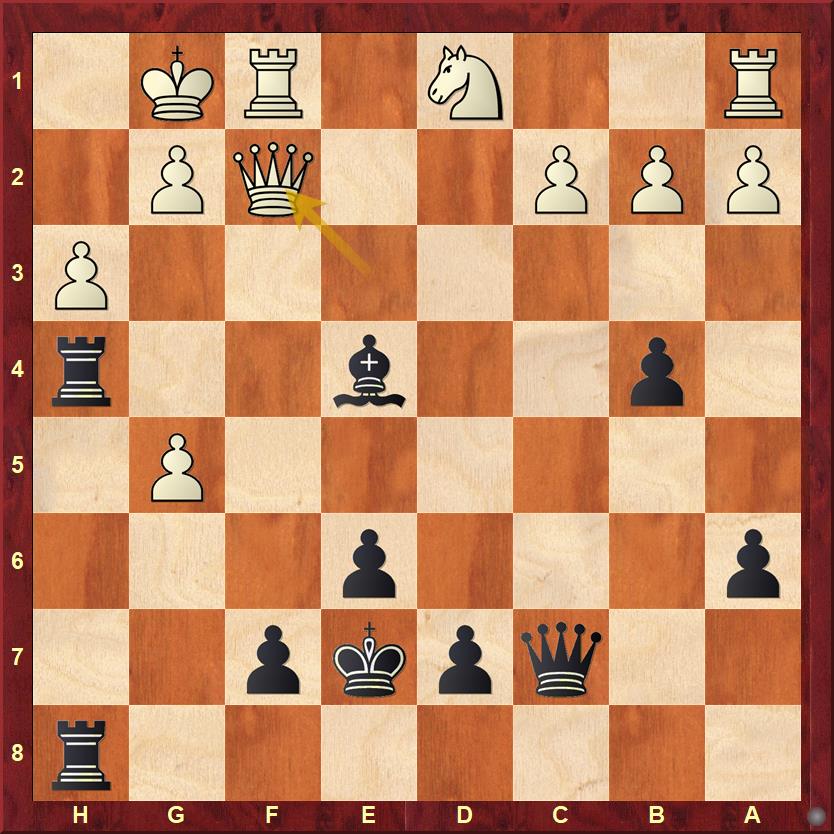
VS: Xie Jun got rattled at this point I think. 22.Nf2 would've been the best move, but even the future world champion couldn't keep her nerve in this position. Another thing is, she couldn't possibly imagine what was coming! Here Judit uncorked the beautiful 22...f5.
SS: The point after 23.gxf6+ is 23...Kf7 and White's own pawn is providing the Black king necessary shelter. Judit won the game in style, playing Bxg2 and completely exposing the White king.
VS: Look at the attacking ratio in this game. Once again, the number of pieces attacking was much more than the number of pieces defending. I feel that this is where Judit Polgar's star started shining, not just the age and not just the performance she was giving. But the way she was playing- more than anything, the fearlessness in her games. Once again, it is the most important quality that is the hallmark of every prodigy on the chessboard.
SS: Throughout Judit's career, as she was making these strides, she was also breaking all the barriers in chess. After she became a grandmaster, she started playing in all the super tournaments. What was the atmosphere like at that point? Also, Judit mentioned that when she went to play in tournaments, people did not take her seriously, and she had to defeat them to earn their respect.
VS: Anand told me long ago that he had to face problems like this as well. When he was a prodigy and became the world junior champion by defeating the soviet sensations like Ivanchuk, Gelfand, and company, they all said Anand is a natural talent and how beautifully he plays. Then when he really started beating people like Karpov and Kasparov, they began to say that Anand's play is generally unsound and too fast. Anand said that's what happened to Judit for a long extent as well. Till a certain time, everyone said Judit is a wonderful sensation and all. But when she started defeating players like Kasparov, Shirov, and Karpov, some people couldn't accept that fact. I feel that she had to work doubly hard to be accepted by the top players at the time.
Elisabeta Polihroniade (Romania) vs Judit Polgar (Hungary), 1988 Thessaloniki Olympiad
VS: Elisabeta has actually come to India to play a Women Grandmaster event at Chennai in 1990. I was a spectator at that event. She went on to become a very respected and world-famous arbiter.


SS: This is already a very sharp position, Black can't really move the knight as the d7-pawn would fall. So Judit played 13...Bc5! 14. Qd3 Bxe3 15.Qxe3 and now another tactical shot- 15...b4.
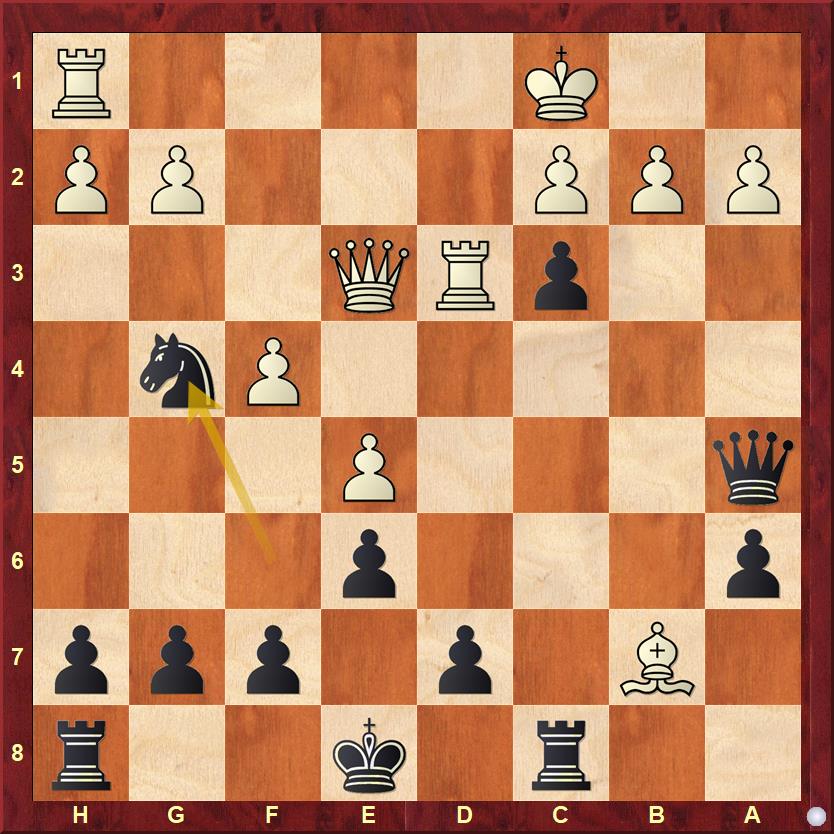
VS: 15...b4 was a typical Judit move. Once again, you know these are games that should not be analyzed using engines and trying to find who's right and who's wrong. Look at the ideas playing out on the field, and the courage shown by the players. Then you understand the worth of this game. Right? In this position, it's extremely difficult to find the best move suggested by the engine- 18.Qd4. There are so many interesting ideas to look at like Qf3 or Qg3, and I'm sure there's a subtle point behind playing Qd4 and not playing Rxc3 (played in the game). These are not the things you should take away from these games. What you should learn is the courage displayed by Black, this is a wonderfully imaginative game by Judit.
VS: Somewhere around 1990, Judit played a GM tournament in Delhi. The kind of buzz created when the Polgar sisters came to play was simply amazing. In many ways, this fantastic debut of Judit started a chapter in the history of chess. This is the common pattern among all of the players we have discussed so far- they all started a new chapter in chess history.

SS: It was a great experience to hear about Judit Polgar's mind-boggling performance in the 1988 Chess Olympiad. Thank you, Saravanan!
VS: I had a great time as well, thank you, Sagar!












